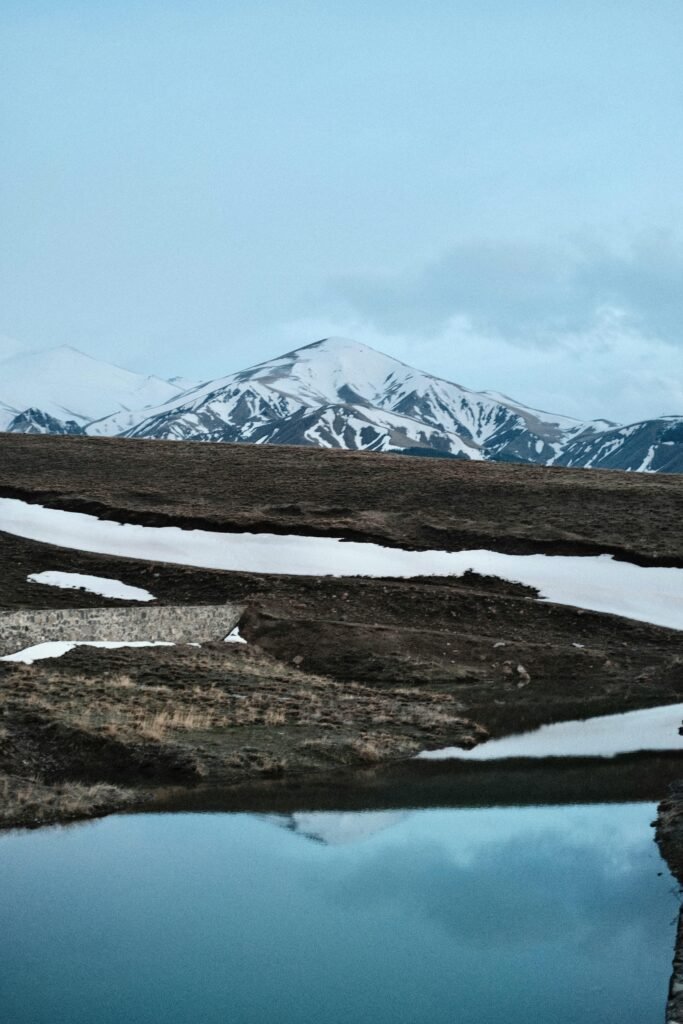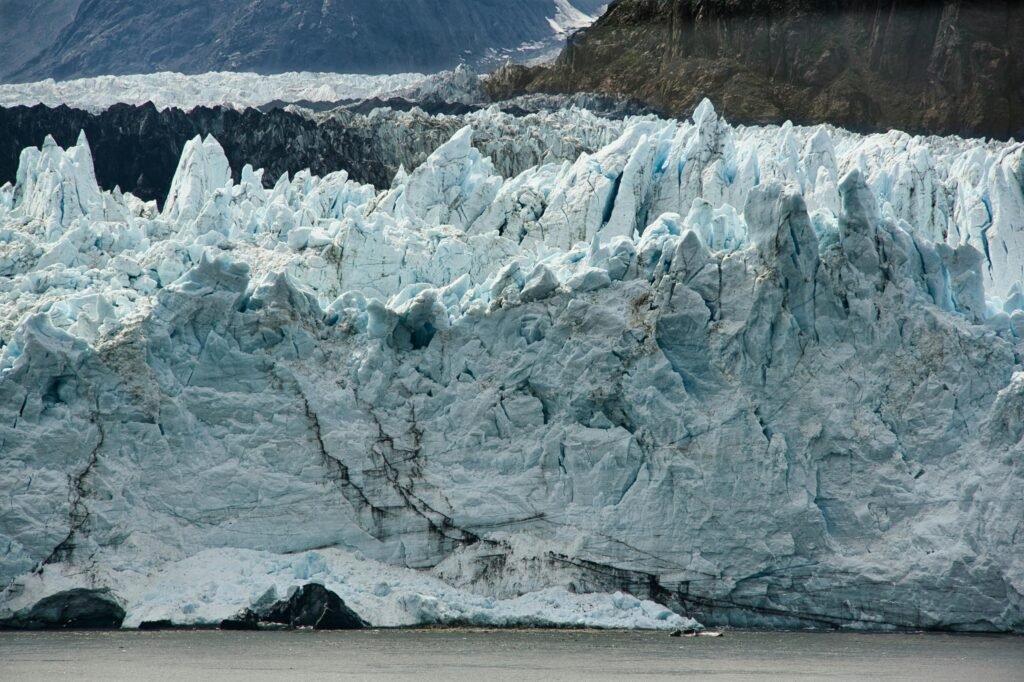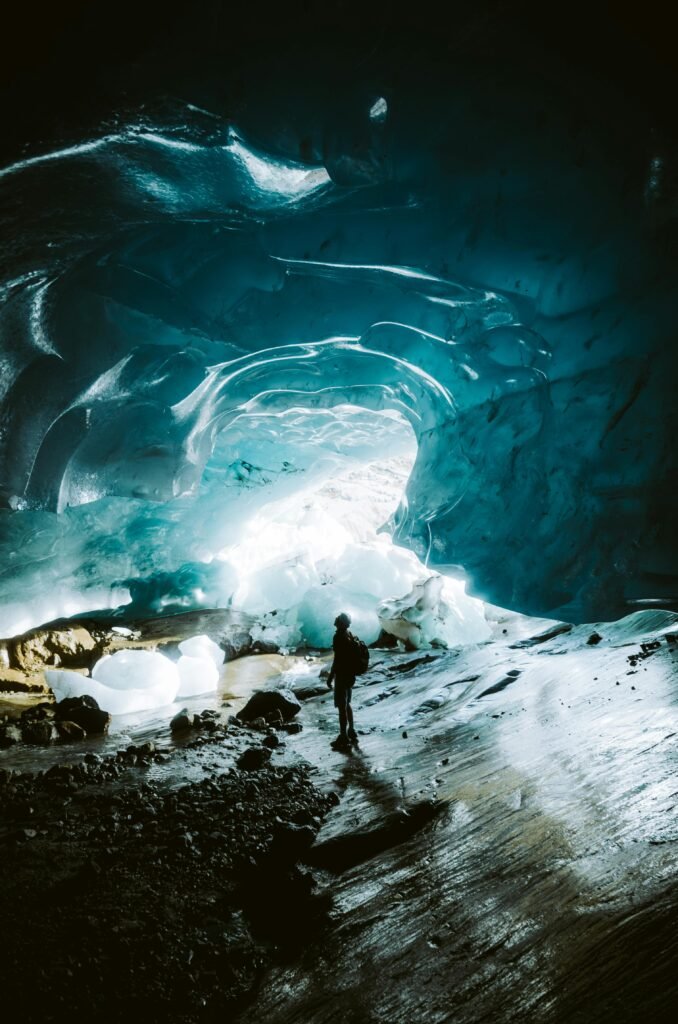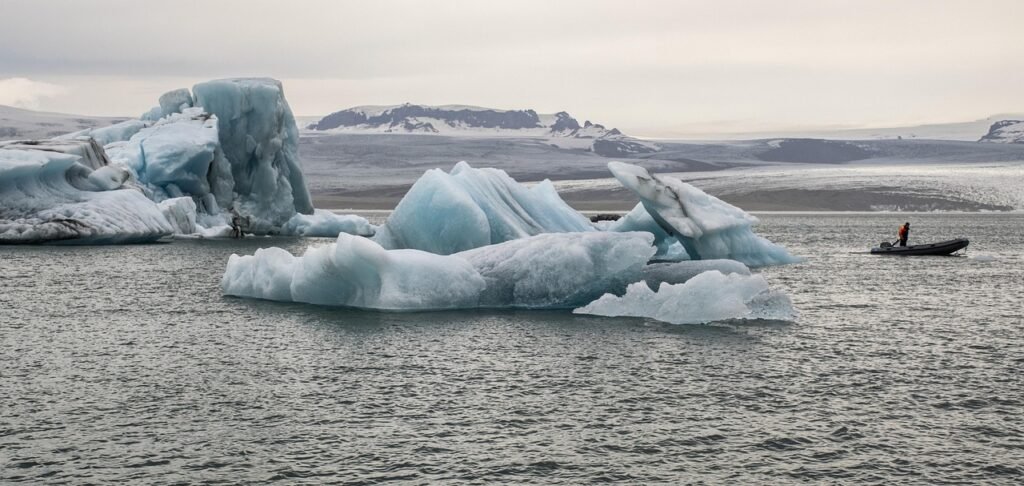Exploring Depositional Environments
Glacial systems are dynamic, with sedimentary deposits forming in a variety of environments that reflect the position relative to the glacier and the transport processes at play. The environments below are especially relevant to interpreting glacigenic and mass transport structures.
Glacial Depositional Environments
Understanding the depositional environment of a sedimentary deposit is key to interpreting its origin, transport processes, and the environmental conditions at the time of deposition. This section of the atlas focuses on environments commonly associated with glacial activity and mass transport processes, highlighting the structures and sedimentary features that form within them.
In glacial systems, depositional environments can vary dramatically over short distances and timescales, influenced by factors like ice margin position, meltwater flow, sediment availability, and topography.

Paraglacial and Mass Flow Environments
These environments form along slopes adjacent to glacial systems, where rapid sedimentation, ice retreat, or gravitational instability triggers mass movement. Sediment is transported downslope by processes ranging from cohesive debris flows to turbulent turbidity currents, often undergoing flow transformation en route.
Processes:
Debris flows, slumps, slides, turbidity currents, and hybrid sediment gravity flows
Deposits:
Mass flow diamictons, hybrid beds, brecciated intervals, deformed silts and sands
Structures:
Convolute bedding, flame structures, load casts, slump folds, injection features
These deposits record the transition from cohesive to turbulent flow, producing a rich array of soft-sediment deformation structures and hybrid event beds. They are key for interpreting rapid sedimentation, slope failure, and transformation processes in both glacial and deepwater basin-margin settings.

Ice-Contact Zones
This environment encompasses areas at or near the glacier margin, where sediment interacts directly with stagnant or melting ice. Deposition occurs through melt-out, ice collapse, and slumping, often producing irregular and poorly sorted deposits with localized deformation.
Processes:
Melt-out of debris-laden ice, ice collapse, slumping, sediment reworking against ice margins
Deposits:
Stratified sands and gravels, ice-contact deltas, kettle fills, hummocky moraines
Structures:
Collapse-related deformation, convolute bedding, soft-sediment folds, irregular stratification
Ice-contact zones preserve evidence of rapidly changing depositional conditions and are often characterized by chaotic internal structures and ice-controlled sediment architecture.
These environments are critical for interpreting the retreat phase of glacial systems and their impact on sediment distribution.

Subglacial Environment
This environment exists beneath the actively moving glacier, where high pressures, ice-sediment interaction, and meltwater influence produce distinct deformational and erosional features. Subglacial processes play a major role in shaping the basal sedimentary record, often under water-saturated and shear-dominated conditions.
Processes:
Ice deformation, basal melting, lodgement, subglacial shear, and meltwater pressurization
Deposits:
Lodgement till, deformation till, subglacial melt-out till, glaciotectonites
Structures:
Striated pavements, whalebacks, Rôche moutonnées, clast pavements, bullet-shaped clasts, shear fabrics, boudins, hydrofractures
Subglacial environments are characterized by high-pressure, high-strain conditions, producing a suite of deformation and traction-related structures. These features provide critical insight into ice-bed coupling, paleo-ice flow direction, and the mechanical behavior of sediment beneath glaciers.

Proglacial Environment
The proglacial zone lies beyond the glacier margin, where sediment is delivered and reworked by meltwater or icebergs in a range of terrestrial and marine-influenced settings. These environments are defined by the dominant transport and depositional processes—ranging from high-energy fluvial systems to calm lacustrine or marine basins—and preserve a wide spectrum of diagnostic sedimentary structures.
Glaciofluvial (Meltwater-Dominated)
Deposits: Well-sorted sands and gravels
Structures: Cross-bedding, planar stratification, clast imbrication
Features: Outwash plains, kame terraces, eskers
These high-energy environments are shaped by braided meltwater streams, producing structures that reflect rapid sediment transport and channel migration.
Glaciolacustrine (Proglacial Lake Settings)
Deposits: Varved clays and silts, dropstones
Structures: Fine laminations, graded bedding, rhythmites
Features: Deltaic foresets, underflows, ice-rafted debris
Glaciolacustrine settings preserve finely layered records of seasonal and episodic deposition, offering exceptional insight into meltwater discharge variability and sediment settling dynamics.
Glaciomarine (Marine-Influenced Settings)
Deposits: Massive or laminated muds, gravelly diamictons
Structures: Dropstones, iceberg scour marks, bioturbation surfaces
Features: Subaqueous fans, grounding-line fans, distal marine drapes
These environments record iceberg rafting, marine sedimentation, and glacial influence in ocean basins, making them essential for understanding sediment dispersal beyond the terrestrial glacial system.
